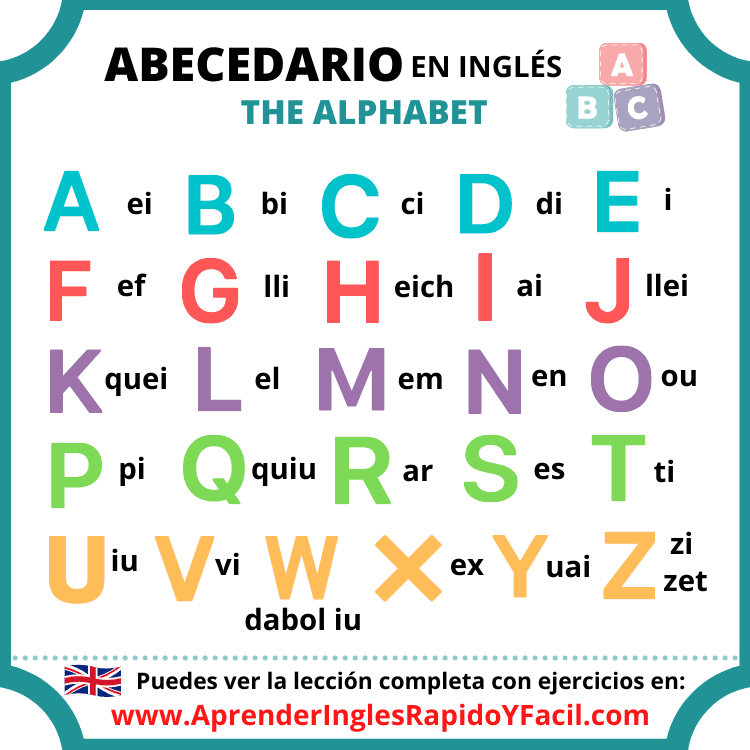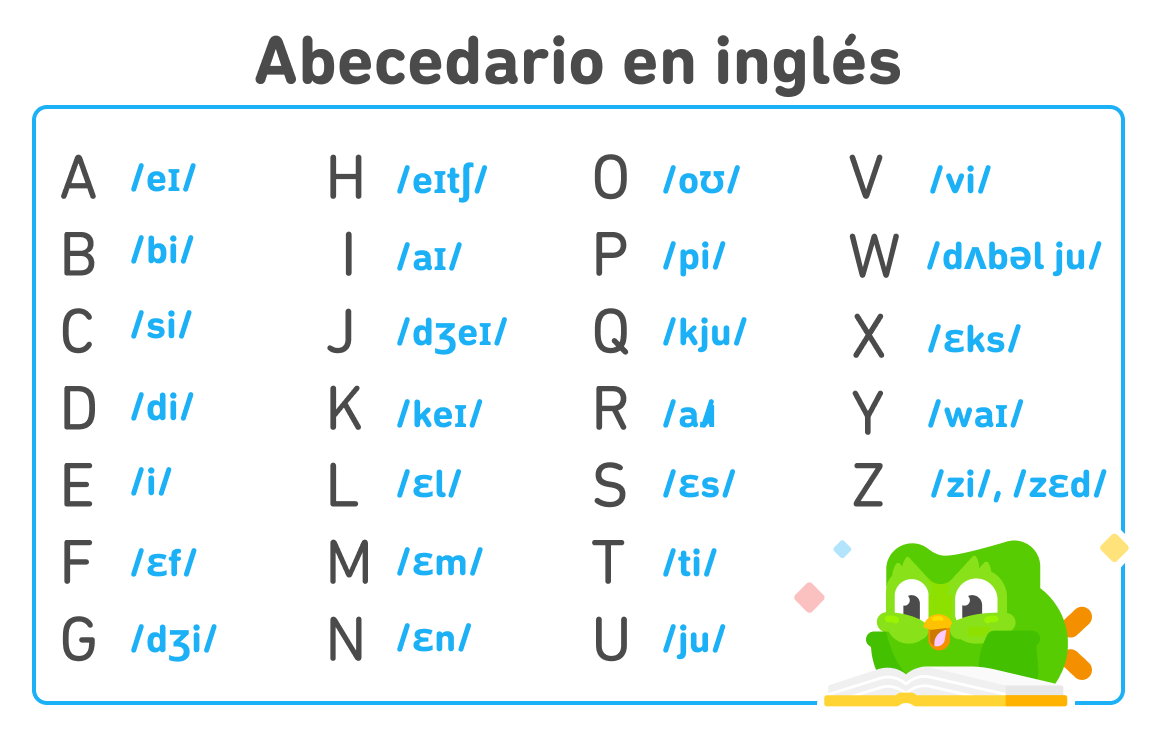El Abecedario en Inglés y su Pronunciación: A Simple Guide
Learning the English alphabet, or “El Abecedario” as it’s known in Spanish, is the cornerstone of mastering the English language. This simple guide provides a clear and concise overview of each letter, along with its pronunciation, making your initial steps into the world of English much smoother. Whether you’re a beginner or simply looking to refresh your knowledge, this article is designed to help you build a solid foundation. Let’s dive in!
Understanding the English Alphabet (El Abecedario)
The English alphabet consists of 26 letters, the same number as the Spanish alphabet. However, the pronunciation of these letters, and the sounds they make, can differ significantly. Familiarizing yourself with these differences is crucial for both reading and speaking English accurately.
The Letters and Their Pronunciation
Here’s a breakdown of each letter, its corresponding pronunciation, and a common example word to help you remember:
- A: /eɪ/ (as in “ay”) - Example: Apple
- B: /biː/ (as in “bee”) - Example: Ball
- C: /siː/ (as in “see”) - Example: Cat
- D: /diː/ (as in “dee”) - Example: Dog
- E: /iː/ (as in “ee”) - Example: Elephant
- F: /ɛf/ (as in “ef”) - Example: Fish
- G: /dʒiː/ (as in “jee”) - Example: Goat
- H: /eɪtʃ/ (as in “aytch”) - Example: House
- I: /aɪ/ (as in “eye”) - Example: Ink
- J: /dʒeɪ/ (as in “jay”) - Example: Jump
- K: /keɪ/ (as in “kay”) - Example: Kite
- L: /ɛl/ (as in “el”) - Example: Lion
- M: /ɛm/ (as in “em”) - Example: Mouse
- N: /ɛn/ (as in “en”) - Example: Nest
- O: /oʊ/ (as in “oh”) - Example: Orange
- P: /piː/ (as in “pea”) - Example: Pen
- Q: /kjuː/ (as in “cue”) - Example: Quiet
- R: /ɑːr/ (as in “ar”) - Example: Rabbit
- S: /ɛs/ (as in “ess”) - Example: Sun
- T: /tiː/ (as in “tee”) - Example: Tree
- U: /juː/ (as in “you”) - Example: Umbrella
- V: /viː/ (as in “vee”) - Example: Van
- W: /dʌb(ə)l juː/ (as in “dub-ble you”) - Example: Water
- X: /ɛks/ (as in “eks”) - Example: X-ray
- Y: /waɪ/ (as in “why”) - Example: Yellow
- Z: /ziː/ (as in “zee”) - Example: Zebra
Tips for Practicing Pronunciation
- Listen and Repeat: The most effective way to learn pronunciation is to listen to native speakers and repeat after them. Use online resources like YouTube videos, pronunciation guides, or language learning apps.
- Record Yourself: Record yourself saying the alphabet and individual words. Then, compare your pronunciation to the examples you’ve listened to. This helps you identify areas for improvement.
- Focus on Sounds: Pay attention to the individual sounds each letter makes, rather than just memorizing the letter names. This will help you decipher words you haven’t seen before.
- Practice Regularly: Consistent practice is key. Dedicate a few minutes each day to practicing the alphabet and saying words aloud.
- Don’t Be Afraid to Make Mistakes: Everyone makes mistakes when learning a new language. Embrace them as part of the learning process and use them as opportunities to improve.
Common Pronunciation Challenges
While the above guide provides a general overview, some letters can present challenges:
- R: The English “R” sound is often rolled more aggressively than in Spanish.
- W: The “W” sound is often confused with the Spanish “V” sound.
- Th: The “th” sound can be tricky. It has two main sounds: a voiced sound (as in “this”) and a voiceless sound (as in “think”).
Conclusion
Mastering the English alphabet and its pronunciation is a fundamental step in your language learning journey. By understanding the sounds of each letter and practicing regularly, you’ll build a strong foundation for reading, writing, and speaking English fluently. Remember to be patient with yourself, utilize available resources, and enjoy the process of learning!
Frequently Asked Questions (FAQs)
How important is it to learn the alphabet before anything else? Learning the alphabet is incredibly important. It’s the foundation upon which you build your reading and writing skills. Understanding the alphabet helps you decode words and improves your pronunciation.
Are there any differences in the alphabet between American and British English? The alphabet is the same, but there are slight pronunciation differences. For example, “Z” is often pronounced “zed” in British English and “zee” in American English.
What are some good online resources for practicing pronunciation? YouTube channels dedicated to English pronunciation, apps like Duolingo, and websites like Forvo (which provides audio pronunciations of words) are excellent resources.
How can I improve my pronunciation of specific sounds like “th”? Focus on the placement of your tongue and the airflow when making the sound. Listen carefully to how native speakers pronounce it and try to mimic them. Practice tongue twisters that incorporate the sound.




